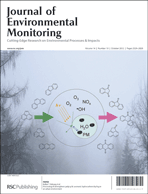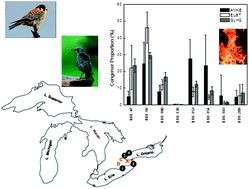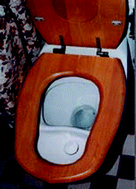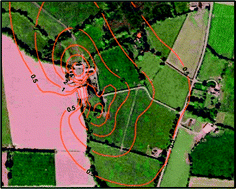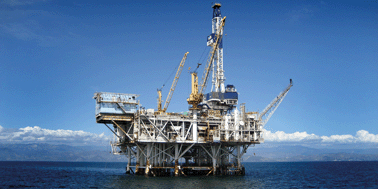This month sees the following articles in the Journal of Environmental Monitoring that are in the top ten most accessed:
Emerging investigators contributors 2012
Thomas Borch, Richard Carbonaro, Juana Maria Delgado-Saborit, Michael Dodd, Michelle Hladik, Young-Shin Jun, Christopher Kim, Jung-Hwan Kwon, Yi-Pin Lin, Sara Mason, Jennifer Murphy, Jeff Nason, Hee-Deung Park, Zhimin Qiang, Christopher Szakal
J. Environ. Monit., 2012,14, 1745-1753
DOI: 10.1039/C2EM90032G
Potential impacts of disinfection processes on elimination and deactivation of antibiotic resistance genes during water and wastewater treatment
Michael C. Dodd
J. Environ. Monit., 2012, 14, 1754-1771
DOI: 10.1039/C2EM00006G
The release of engineered nanomaterials to the environment
Fadri Gottschalk and Bernd Nowack
J. Environ. Monit., 2011, 13, 1145-1155
DOI: 10.1039/C0EM00547A
Arsenic mobilization and attenuation by mineral–water interactions: implications for managed aquifer recharge
Chelsea W. Neil, Y. Jeffrey Yang and Young-Shin Jun
J. Environ. Monit., 2012, 14, 1772-1788
DOI: 10.1039/C2EM30323J
Aquatic environmental nanoparticles
Nicholas S. Wigginton, Kelly L. Haus and Michael F. Hochella Jr
J. Environ. Monit., 2007, 9, 1306-1316
DOI: 10.1039/B712709J
Contamination of Canadian and European bottled waters with antimony from PET containers
William Shotyk, Michael Krachler and Bin Chen
J. Environ. Monit., 2006, 8, 288-292
DOI: 10.1039/B517844B
Utilizing pyrosequencing and quantitative PCR to characterize fungal populations among house dust samples
Matthew W. Nonnenmann, Gloria Coronado, Beti Thompson, William C. Griffith, John Delton Hanson, Stephen Vesper and Elaine M. Faustman
J. Environ. Monit., 2012, 14, 2038-2043
DOI: 10.1039/C2EM30229B
Comparative DFT study of inner-sphere As(III) complexes on hydrated α-Fe2O3(0001) surface models
Christoffer J. Goffinet and Sara E. Mason
J. Environ. Monit., 2012, 14, 1860-1871
DOI: 10.1039/C2EM30355H
Persistent organic pollutants in sediment from the southern Baltic: risk assessment
Joanna Szlinder-Richert, Zygmunt Usydus and Aleksander Drgas
J. Environ. Monit., 2012, 14, 2100-2107
DOI: 10.1039/C2EM30221G
Fingerprinting of petroleum hydrocarbons (PHC) and other biogenic organic compounds (BOC) in oil-contaminated and background soil samples
Zhendi Wang, C. Yang, Z. Yang, B. Hollebone, C. E. Brown, M. Landriault, J. Sun, S. M. Mudge, F. Kelly-Hooper and D. G. Dixon
J. Environ. Monit., 2012, 14, 2367-2381
DOI: 10.1039/C2EM30339F
Why not take a look at the articles today and blog your thoughts and comments below.
Fancy submitting an article to JEM? Then why not submit to us today or alternatively email us your suggestions.
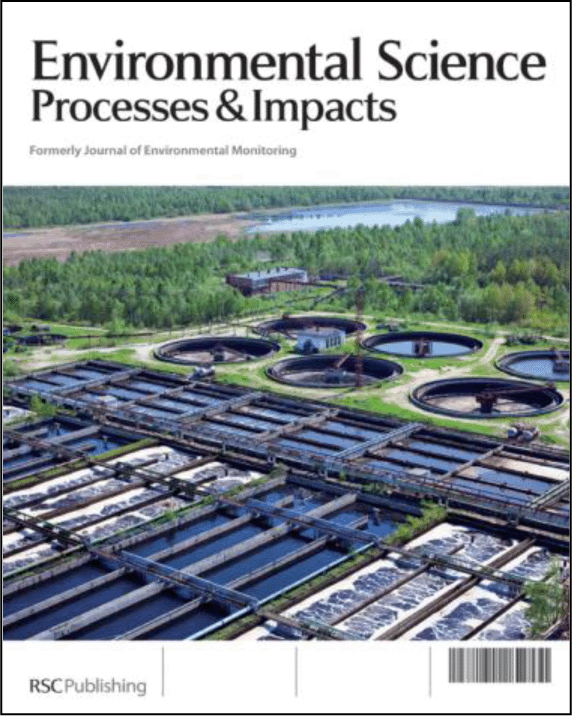 We would like to make our authors and referees aware that from Monday 1st October 2012 our online submission portal will be changed to reflect our new name, Environmental Science: Processes & Impacts.
We would like to make our authors and referees aware that from Monday 1st October 2012 our online submission portal will be changed to reflect our new name, Environmental Science: Processes & Impacts.










